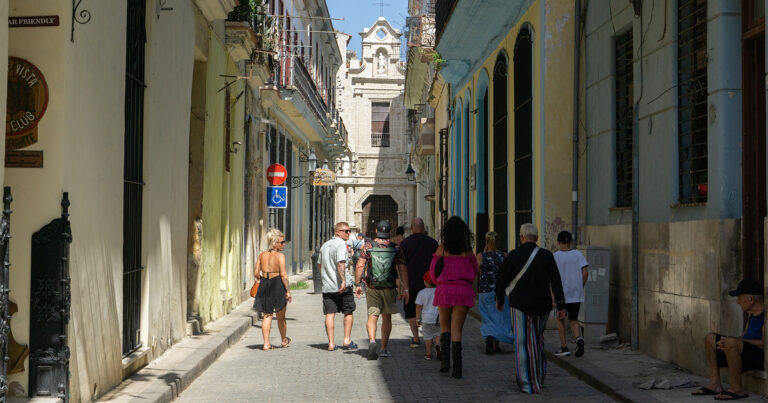Cuban economist Pedro Monreal has discovered falsified data on the number of tourists to Cuba in the first half of this year. The issue concerns the 1.8 million tourists that the Cuban government claims, through Cubadebate, visited the island between January and June of this year.
“We know that there were 117,488 cumulative visitors from January to May, so it is impossible that there was 1.8 million from January to June,” Monreal explained on social media platform X (formerly Twitter). He added that “to reach 1.8 million cumulative visitors from January to June, there would have to have been 625,112 visitors in June, but the highest number of visitors in a June in recent history was in June 2018 (342,195).”
Cubadevate newspaper reported on Monday that Economy Minister Joaquin Alonso Vásquez informed the People’s Power National Assembly’s Economic Committee that tourist numbers had increased by 1.8 percent (presumably in the first half of this year) compared to the same period in 2023. According to figures from the National Institute of Statistics and Information (ONEI), reported by the EFE news agency, 742,094 foreign tourists visited Cuba from January to June last year.
Monreal also found irregularities, to say the least, in the ranking of Cuba’s main tourist markets. According to CubaDebate, these markets are Canada, Russia, Cubans abroad, and Germany. However, Monreal noted that the top five tourist destinations from January to May were Canada, the Cuban community, the United States, Russia, and the United Kingdom. Official data for June has not been released.
“Perhaps in the January-June 2024 data, Russia could have overtaken the United States, but it is unlikely to overtake the Cuban community. It seems unlikely that Germany will overtake the United States, and the report does not even mention it,” Monreal concluded.
The numbers don’t add up and the official explanation is flawed. Cuba’s tourism minister congratulated himself on April 26th on reaching 1 million visitors in the first quarter of the year and set a target of 3 million for this year. That’s slightly lower than the 2023 target of 3.5 million, but still leaves the year at 1.9 million visitors from January to October, far short of the Dominican Republic’s 6 million and Cancun, Mexico’s 4 million.
Last year, the government again invested more in Cuba’s tourism development than in health and education infrastructure, despite government rhetoric suggesting otherwise. Economist Pedro Monreal previously highlighted this imbalance with reference to official ONEI data.
“The statistics confirm that Cuba’s investment structure is highly distorted, with a third of it concentrated mainly in tourism-related activities,” Monreal said at the time.
The truth behind Cuba’s tourism data
In this section, we answer frequently asked questions about the inconsistencies in Cuba’s tourism data identified by economist Pedro Monreal.
What inconsistencies did Pedro Monreal find in Cuba’s tourism data?
Based on cumulative data from January to May (117,488 visitors), Pedro Monreal concluded that the claim of 1.8 million visitors to Cuba from January to June 2024 is not feasible, as this would require incredibly high visitor numbers in June.
Why is official tourism data considered inaccurate?
Official tourism data is believed to be inaccurate as it does not match previous years’ data or the highest number of visitors recorded in a single month, suggesting the figures are inflated.
According to official data, what are Cuba’s main tourism markets?
According to Cubadebate, Cuba’s main tourist markets are Canada, Russia, Cubans abroad and Germany, but Monreal’s findings suggest there is a discrepancy in this ranking.
How does Pedro Monreal’s analysis affect the perception of Cuba’s tourism statistics?
Pedro Monreal’s analysis casts doubt on the accuracy of Cuba’s tourism statistics and reveals the possibility that the data has been manipulated to paint the industry’s performance in a more favorable light.

